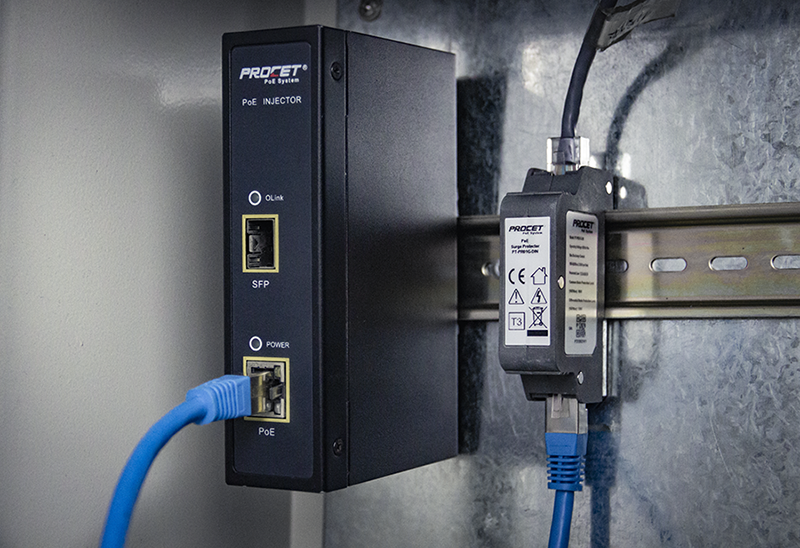Home >> News >> Product News
As an integral part of the PoE network cable connection, Ethernet cables are also critical to the network experience. In addition to the standard matching PoE power supplies and PoE switches available at PROCET, choosing the right cables will enable the Ethernet hardware and software to perform well.

1.Differences in classification:
Cat5e,Cat6,Cat6e are all network cables equipped with an RJ45 connector, Cat5e Super Category 5 cable, while Cat6 is categorized as a Category 6 cable, and Cat6e belongs to the category of Super Category 6 cable.Although categorized differently, they work the same way and can be plugged into any Ethernet port on a computer, router or other similar device.However, Cat7 network cables have a special interface, which has a GigaGate45 (CG45) connector type.The main difference between Category 5 and Category 6 cable is that the two cores in each twisted pair are not stranded to the same degree, and Category 6 twisted pair cable is more stranded than Category 5.There are also secondary differences, such as a cross keel in a Category 6 cable and not in a Category 5. Twisted-pair cables transmit differential signals, and the tighter the stranding of the cores in each pair, the less interference there will be between the pairs, allowing them to operate at higher frequencies.
2.Differences in transmission bandwidth:
The transmission frequency bandwidth of Cat5e Category 5e is 100MHz, while the transmission frequency bandwidth of Cat6 is 250MHz, and Cat6e can reach 500MHz.
3.Differences in network transmission speed and distance:
Cat5e Category 5e is used in PoE network cable Gigabit Ethernet, with a transmission distance of up to 100m and a transmission speed of 1000Mbps. Cat6 network cable can provide transmission speeds up to 10Gbps in 250MHz bandwidth. Cat6 is suitable for applications with a transmission rate of 1Gbps. Cat6e can provide transmission speeds up to 10Gbps in a 500MHz bandwidth. When selecting network cables, if the PoE product is a 2.5G/5G/10G product, Cat6 or Cat6e network cables should be selected.
4.Differences in applications using 10GBASE-T:
The transmission distance of Cat5e Category 5e and Cat6 network cables are both 100m, but when using 10GBASE-T applications, the transmission distance of Cat6 network cable can reach 55 meters. If transmission is required within a distance of 100m, a Cat6e network cable is required.
5. Differences in transmission performance:
In terms of performance, Cat5, Cat5e, Cat6, and Cat6e increase in order. Of course, the prices of these types of PoE network cable also increase in sequence.
